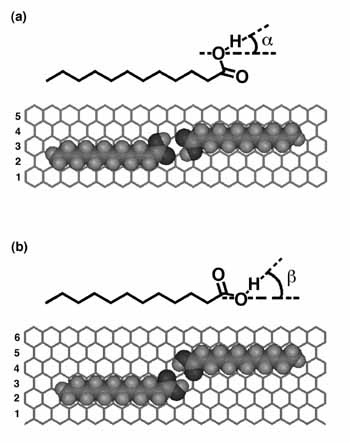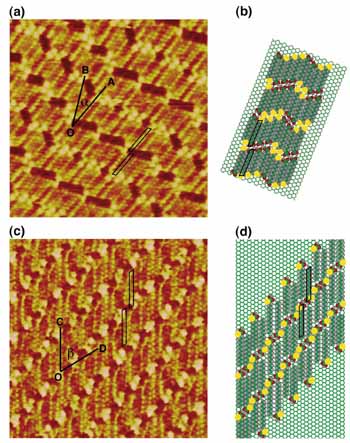
Left Schematic representation of the two conformations adopted by the carboxyl group of n-carboxylic acids (n-dodecanoic acid is used as an example here) upon adsorption on a graphite surface. (a) The alkyl tail is eclipsed by the hydroxyl group. a is the angle between the hydroxyl group and the long molecular axis. Two n-dodecanoic acid molecules adopting this conformation are shown lying on top of a graphite lattice. (b) The alkyl tail is eclipsed by the carboxyl group. b is the angle between the hydroxyl group and the long molecular axis. Two n-dodecanoic acid molecules adopting this conformation are shown lying on top of a graphite lattice.
For more detail, see: Fang et al., J. Phys. Chem. B, Vol. 103, No. 2, pg. 5712-5715.
